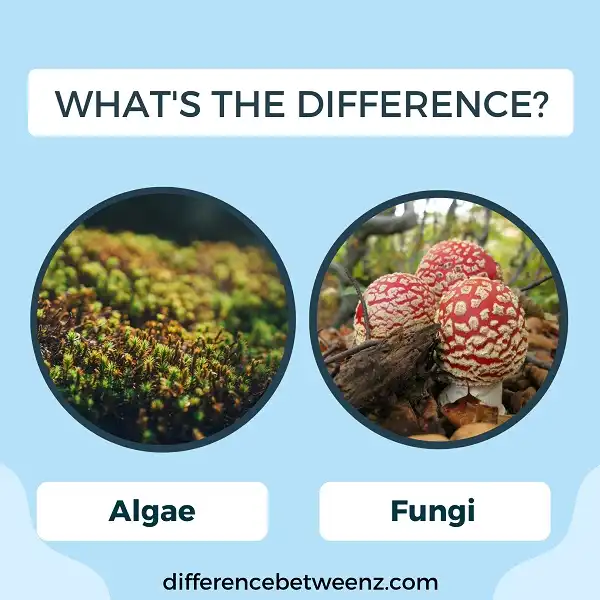Algae and fungi are both types of organisms that can be found in the environment. While they share some similarities, they also have some key differences. In this blog post, we will take a closer look at these two types of organisms. We will discuss what makes them unique and how they are different from each other. We will also explore the roles that algae and fungi play in the environment. By the end of this blog post, you will have a better understanding of these two important organisms.
What is Algae?
Algae is a term used to describe a wide variety of plant-like organisms that range in size from single cells to huge kelp forests. Algae are found in moist environments all over the world and play an important role in the global ecosystem. They are often the primary producers in food webs, meaning that they convert sunlight into energy that is then used by other organisms.
Algae are also a major source of oxygen in the atmosphere and play a role in regulating the Earth’s climate. However, algae can also cause problems when they grow out of control and create harmful blooms that can damage ecosystems and negatively impact human health. Therefore, it is important to understand both the positive and negative aspects of algae in order to ensure that they are managed effectively.
What is Fungi?
- Fungi are a group of eukaryotic organisms that include yeasts, molds, and mushrooms. Fungi are distinguished from other eukaryotes, such as plants and animals, by their lack of chlorophyll and their dependence on organic matter for food. Fungi play an important role in the decomposition of dead plants and animal matter, and many species are valuable agents of biodegradation.
- Fungi are also important in the manufacture of cheese, bread, and beer. Some fungi are pathogens that can cause disease in humans, plants, or animals. The study of fungi is known as mycology. Fungi occur in all habitats, including freshwater, marine, terrestrial, and soil environments. They range in size from microscopic yeasts to large mushrooms. Fungi are classified into two main groups: the Ascomycota (also known as sac fungi) and the Basidiomycota (also known as club fungi).
- Fungi are typically filamentous, meaning that they consist of long threads called hyphae. The hyphae branch and produce spores that allow the fungus to reproduce. Some fungi form large fruiting bodies called mushrooms that release spores into the air.
Difference between Algae and Fungi
Algae and fungi are both eukaryotic organisms, meaning they have complex cells with a nucleus. However, there are several key differences between these two groups of organisms. Algae are typically aquatic and photosynthetic, while fungi are terrestrial and heterotrophic. Algae generally have simpler body structures than fungi, and they reproduce through spores rather than sexual reproduction.
In addition, algae are more closely related to plants than they are to fungi. While both algae and fungi play important roles in the ecosystem, understanding the differences between these two groups can help to ensure that we are properly caring for these organisms.
Conclusion
Algae and fungi are both eukaryotic, single-celled organisms. They have many similarities but also some important differences. The most distinguishing feature of algae is that they have photosynthetic pigments which give them their green color. Fungi do not have these pigments and instead appear white or light brown.
Algae can be found in marine environments as well as freshwater while fungi are terrestrial, meaning they live on land. Fungi are able to break down complex molecules into simpler ones like glucose while algae cannot.


